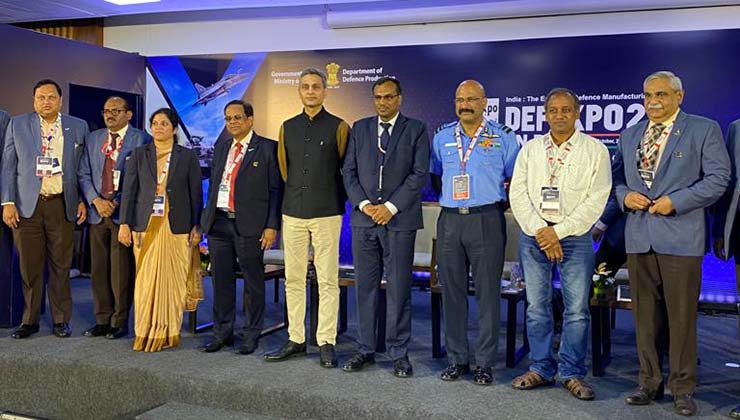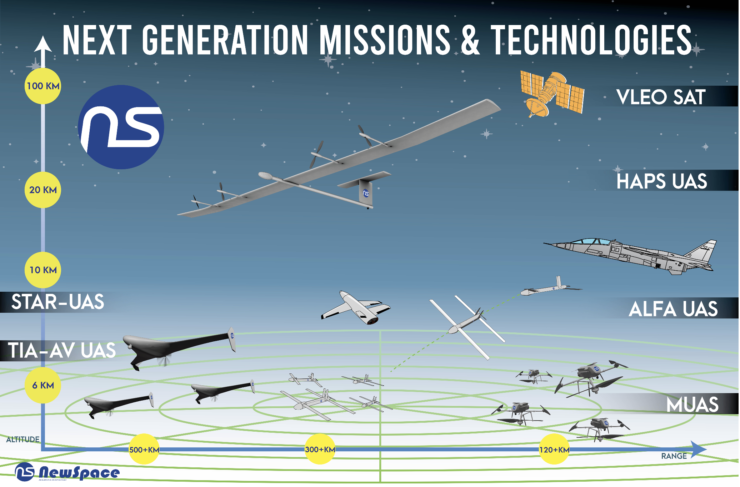
Emerging technologies such as artificial intelligence and autonomous systems are going to trigger a revolution in future warfare. The air power will be based on a network of intelligent and connected platforms navigating autonomously and providing vision using highly accurate and real-time information. In modern airborne vehicles, the technology demonstrates an ability to carry out various critical tasks autonomously. Considering the importance of autonomous technology as part of the DefExpo 2022 seminar series, Hindustan Aeronautics Ltd organised a seminar on Futuristic Autonomous Technologies for Air Dominance.
Addressing the seminar, AVM George Thomas presented the Air Force perspective on air dominance. He said that air dominance, which is commonly understood as total control of the air over an extended period, is not affordable. He gave an example of the US DoD commission’s study reported in December 2016 about achieving air dominance by 2035. The output of the study was that the US government decided that achieving air dominance was unaffordable. Instead, On-Demand Air Superiority was suggested, which means control of the air for a limited time, over a limited area to achieve a certain task.
An autonomous system can operate in an uncertain or changing environment without human involvement and carries out missions or tasks without human intervention. “However, we always face an ethical question before using such systems. Are we in a position as a nation to let the machine take a decision on its own to carry out a combat task that might result in human deaths? We must investigate this issue very carefully,” said AVM George Thomas.
The IAF has set up a unit by the name of UDAAN (Unit for Digitisation, Automation, Artificial Intelligence, and Application Networking), which is the spearhead of India’s entire AI effort. AI provides autonomous solutions across many domains, including the handling of data. The amount of data these days is so huge that it is almost impossible humanly to go through it. AI is also used in weapon matching, multi-sensor fusion, threat estimation, campaign planning, airlift optimisation, predictive forecasting, predictive maintenance and inventory management. The use of AI is working very well, and it is going to be a game changer, AVM George Thomas said.
AVM George Thomas concluded his speech by saying, “The concept of using autonomy in air dominance is not restricted mainly to using just platforms. It is across the domain and across the piece. We need to see how to integrate to speed up our reaction loop and reaction cycles and become more effective as an air force.”
Krishna Kumar, executive director of HAL, spoke about HAL’s efforts and capabilities in the field of combat autonomous systems. Explaining air dominance, he said, “Air dominance is a degree of air superiority or air supremacy wherein the opposing air force is incapable of effective interference. It is a situation where one force holds complete control over the enemy force in air warfare.” The game-changer technologies, he said, include the stealth ability, the payload one gets, AI autonomy, self-healing structures, high speed, and manoeuvrability.

He said that his study focuses on AI-enabled sensors and systems, requirements in complex battlefield operations, enhanced avionics and vision sensors, directed energy weapons, hypersonic weapons, self-healing structures, and nanomaterials.
He said that AI is a move from automation to autonomy in flight. Explaining the difference, he said, automation is just automating what we were earlier doing, without our intervention. Autonomy is related to decision-making by the machine in crisis situations as well as when failures happen. He elaborated on various technological aspects ranging from material to weapon systems and showcased HAL’s capabilities to develop autonomous technologies.
Krishna Kumar concluded by saying, “Air power is a psychological weapon and everybody, other than the short-sighted soldiers who are too battlefield-minded, underrate the importance of the psychological factors in a war. It is the psychological factor that wins a war more than all other factors.”
Sameer Joshi, CEO of NewSpace Research and Technology Pvt Ltd, provided comprehensive insight on Anti-access and Area-denial offensive capabilities. He spoke about outside-in and inside-out approaches and various key factors for success in a battle. He also highlighted future manned and unmanned operations and the requirements to be considered while designing products and systems. He emphasised exploring the possibilities of acquiring platforms that are rewarding in nature at a far lower cost. In the future, he said, drones will play a huge role and robots will be the future warriors largely because of two facets – autonomy and AI.
“In the future, there is not going to be a single platform. Instead, there will be a combination of various technologies, various platforms, and a very creative concept of operation. This is where the larger engagement will be between the end users and engineers. And, the designers need to define what lies ahead for a well-developed product initiative,” Sameer Joshi said.

Professor Debopam Das of the Department of Aerospace Engineering, IIT Kanpur, spoke about unmanned systems and weapons of the future. He has been working on flapping-wing UAVs for many years. The flapping-wing UAVs developed in his lab have the highest endurance in the world. These are the most efficient among all the UAVs for the simple reason that they do not have a high-speed rotary propeller that consumes the battery. These days, he is working on a dragonfly UAV, which is going to be the most efficient flyer.
The session was insightful and informative, and gave an optimistic picture of India’s Atmanirbharta drive with an eye on future technology for the control of the sky. All four speakers provided valuable contributions to the seminar organised during the DefExpo 2022.








